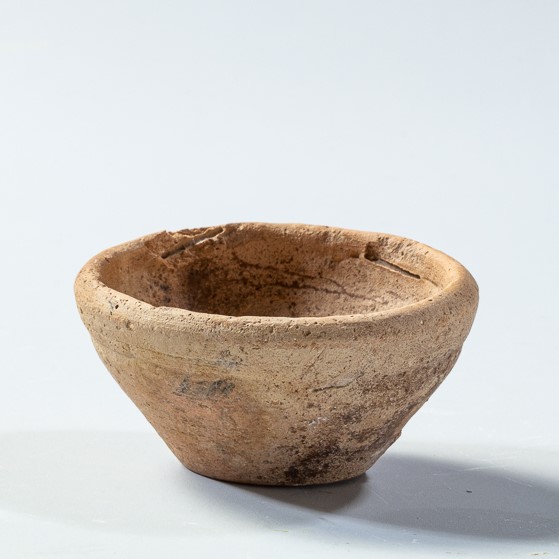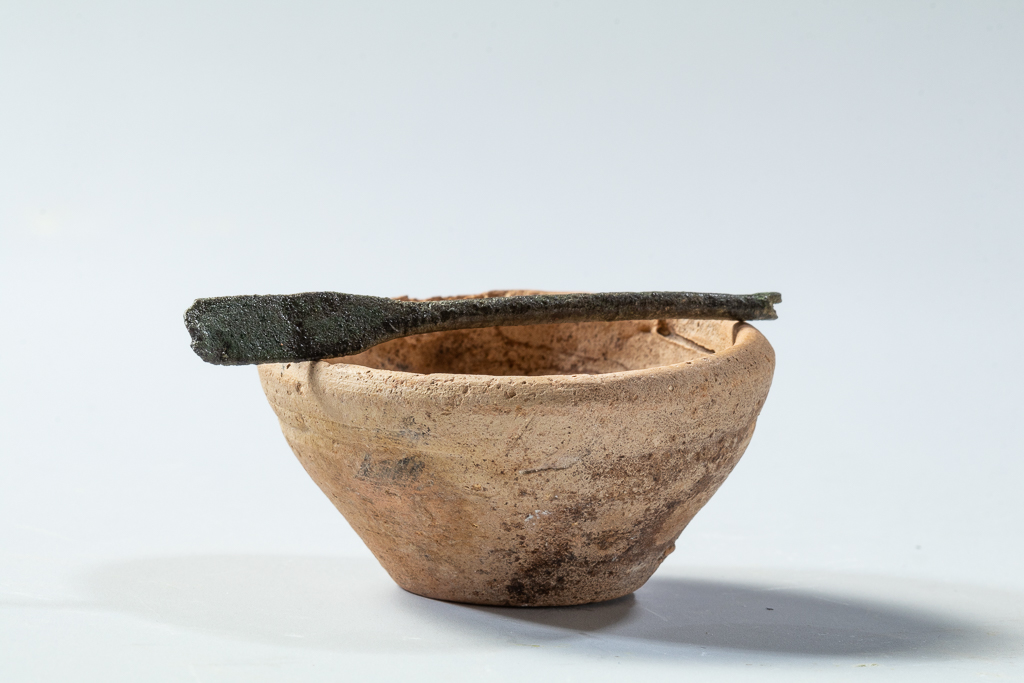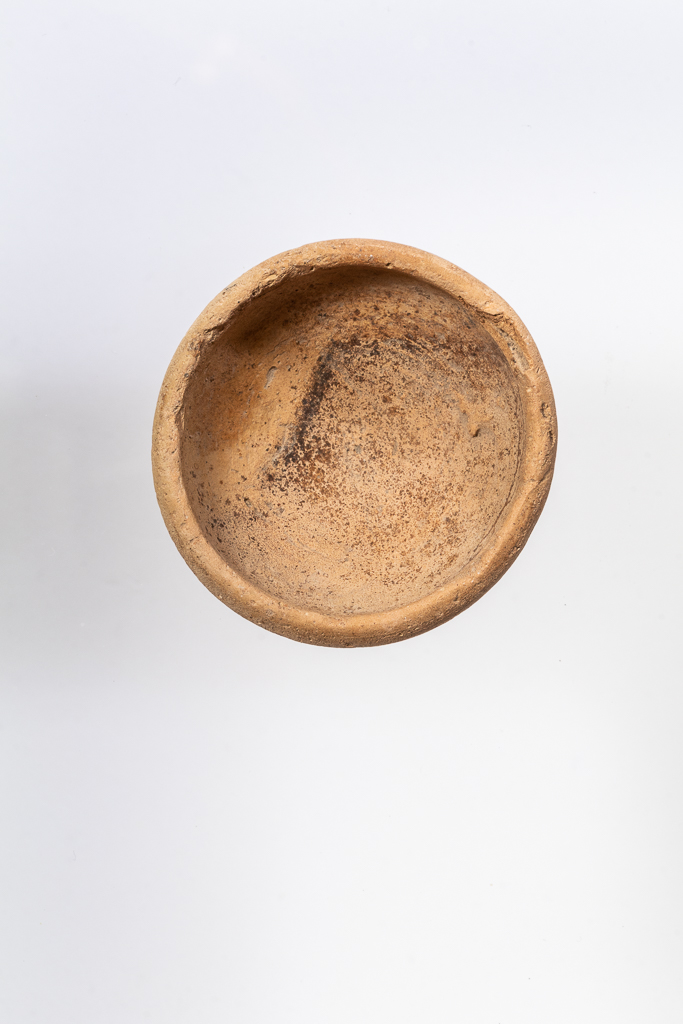Title: Terracotta Cosmetic Bowl - 2019.02
Acquisition number: 2019.02
Author or editor: Ruth Mcconnell
Culture or period: Hellenistic
Date: c. 3rd - 1st century BC
Material: Clay - Terracotta
Object type: Vessels - Bowl
Dimensions: 50mm (w) × 25mm (h)
Origin region or location: Syria
Display case or on loan: 4
Keywords: Hellenistic, Syria
A.M. Berlin, “Studies in Hellenistic Ilion: The Lower City, Stratified Assemblages and Chronology”, Studia Troica 9, 1999, 73-157.
B. Guz-Zilberstein, “The Typology of the Hellenistic Coarse Ware and Selected Loci of the Hellenistic and Roman Periods”, in: J. Berg, A. Gilboa, B. Guz-Zilberstein et al., Excavations at Dor, Final Report IB: Areas A and C (Jerusalem, 1995), 289-434.
H. Jackson, “The Common Wares from the Housing Insula”, in: H. Jackson and J. Tidmarsh, Jebel Khalid on the Euphrates, vol. 3 - The Pottery (Sydney, 2011) 1-261.
S. Rotroff, The Athenian Agora, vol. 29 - Athenian and Imported Wheelmade Table Ware and Related Material (Princeton, 1997).
2019.02
Terracotta Cosmetic Bowl
From the estate of the late Michael David Byrne
Diameter 5 cm; height 2.5 cm
Intact, in fair condition; cracking in rim vicinity, some discoloration. Very small bowl with mildly incurved rim. Tapering shape to flat base.
This small bowl has a rim shape similar to the numerous echinus (incurved rim) bowls unearthed at excavations in Jebel Khalid in north Syria. The ubiquity of such bowls at Hellenistic sites attests to their utility, and varying sizes could be used for different purposes in food service and storage. The smallest bowls served separate functions from those of larger dimensions (H. Jackson, “The Common Wares from the Housing Insula”, in: H. Jackson and J. Tidmarsh, Jebel Khalid on the Euphrates, vol. 3 (Sydney, 2011) 12-13).
S. Rotroff categorises such small bowls as ‘saltcellars’, providing servings of salt at meals (The Athenian Agora, vol. 29 (Princeton, 1997) 158). A.M. Berlin concurs, naming small bowls ‘salters’, and further suggesting their use in holding sauces, garnishes, olives and other meal accompaniments (“Studies in Hellenistic Ilion: The Lower City, Stratified Assemblages and Chronology”, StudiaTroica 9, 1999, 94). B. Guz-Zilberstein, on the other hand, proposes that ‘miniature’ bowls were probably used for mixing cosmetics (“The Typology of the Hellenistic Coarse Ware and Selected Loci of the Hellenistic and Roman Periods”, in: J. Berg, A. Gilboa, B. Guz-Zilberstein et al., Excavations at Dor, Final Report IB: Areas A and C (Jerusalem, 1995) 290). Since the present bowl has a particularly small diameter and modest capacity, a cosmetic function is perhaps more probable.
This bowl may have proved the perfect size for mixing cosmetics with a spatula. Small metal implements of this sort were found at the Jebel Khalid site and are thought to have been useful for cosmetic or medicinal mixing (see 2018.09).


